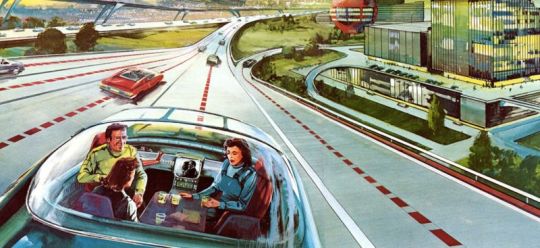by Doron Amiran, CCP | Jan. 11, 2016

In 1898, New York hosted an urban planning conference, where
delegates from around the world discussed the future of transportation.
Although there were only 800 automobiles registered in the US at that time, the auto
revolution was imminent. But these august leaders completely missed it, and
spent the bulk of their time discussing horse manure, since there were over 20
million horses soiling American streets at the time.
Clearly they missed the ball, as less than 20 years later,
cars were permanently pushing horses off American roadways.
Let’s not commit the same mistake.
Many people believe the future of transportation lies in
autonomous vehicles. BMW, Mercedes, Google, Apple, Tesla and Uber are all
betting big on this future. They also believe that self-driving cars will be
powered primarily by electricity. Some reports estimate that as many as 10
million self-driving cars could be on the road in as little as five years.
How many of the 30,000+ annual highway deaths could be
avoided by taking the wheel out of the hands of humans? Data show that 80% of
accidents are caused by driver errors, particularly driving while under the
influence, driving while distracted, or speeding. So it is reasonable to
estimate that a majority of those deaths can be avoided by removing the driver
from the safety equation. What is the value of 24,000 lives? Estimates of the
economic value range in the hundreds of billions of dollars per year, and the
families and friends of each of these tens of thousands of people will tell you
no price can be attached to their health and well-being.
So what is the current status of self-driving cars? The technology that is
coming to market can be divided into three categories: 1) cars with
self-driving features, 2) cars that drive themselves but still require an
operator behind the wheel, and 3) the future promise of completely driverless
cars.
Self-driving driving features like dynamic cruise control,
self-parking and lane assist are quietly being introduced in many new cars. A
wide variety of cars already perform these functions, and more are on their
way. The BMW i3 EV, for example, is developing a feature where you can step out
of your car at the entrance to a parking garage and have the car hunt for a
spot, park itself, and return to you with the tap of an app. These features are
not only the harbingers of a bigger revolution to come, but are driving down
costs. For example, road scanners have come down in cost 10-fold in the past
few years: from a prohibitive $80,000 to “just” $8,000. Perhaps most
importantly, the rollout of these features is familiarizing the public with the
idea of allowing cars to take control some of the time, assuring them this is
not the opening chapter of a creepy sci-fi novel where machines take over the
world.
The next category – user-operated autonomous cars – is also
coming on line. Tesla recently introduced a software upgrade called autopilot that
allows drivers to simply rest their hands on the wheel, and the car drives
itself. Acceleration, braking, steering, and more are all handled by the
on-board computer, in conjunction with its GPSs. A new driver of an autopilot-equipped
Tesla said that the first 20 minutes of having the car steer around curves on California
Hwy 1 were somewhat scary, but he was then able to relax into letting the car
do the work. Bugs remain – including navigation on roads with no striping, under
the shadows of trees, or on blind curves – but overall the technology works
well for early-gen tech. Driver data are being aggregated, so the experience
should rapidly improve as more and more drivers use it.
Due to insurance and regulatory hurdles, truly driverless cars are further
away. But they may well be the future. On-demand electric self-driving cars and
shuttles could completely obviate the need for car ownership, vastly reduce the
need for parking infrastructure, and radically transform the auto industry, our
urban landscapes, and the tax base that funds our national highway trust fund.
We should keep our eyes on the future, and understand that
the current crop of EVs are a transitional technology. Over the next five, ten
and 20 years, it is likely that our transportation system will be completely
overhauled.
Or to put it another way, don’t think about the poop.

–
Doron Amiran is the EV Program Manager for The Climate Center.

